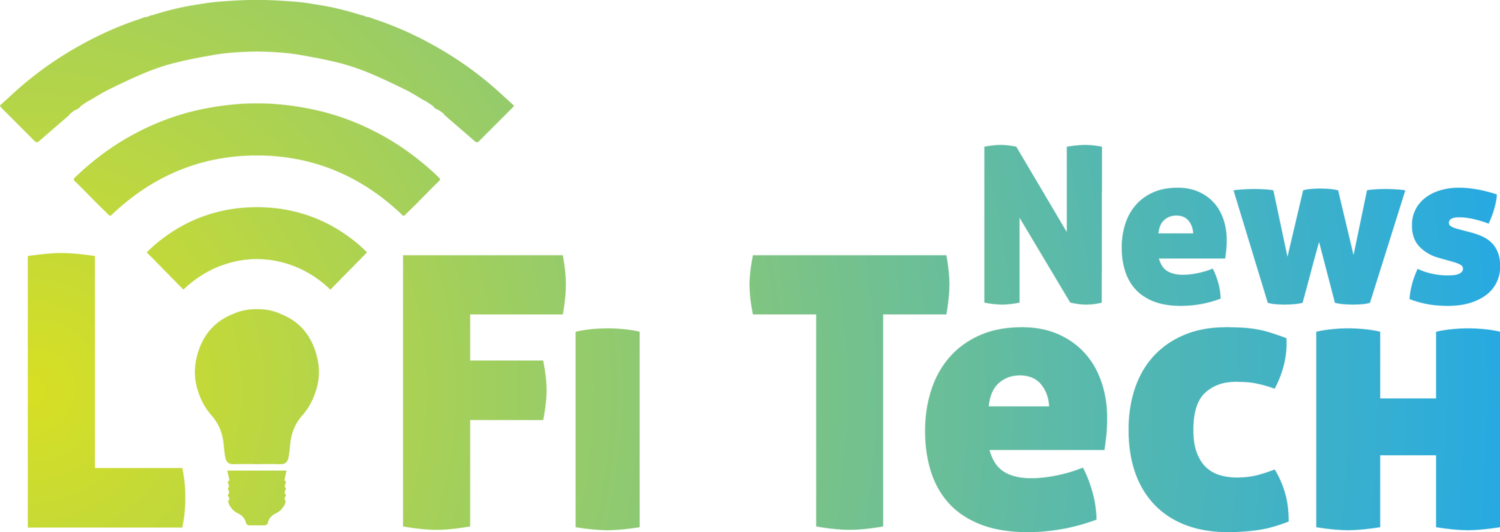Table of Contents
Fraunhofer Institute for Photonic Microsystems (IPMS) Releases a Statement on The Use of Quantum Cryptography and LiFi For Secure Optical Data Communication
Fraunhofer IPMS
Today, the Fraunhofer IPMS released a press statement on their website about the "QuINSiDa" (Quantum-based Infrastructure Networks for Safety-Critical Wireless Data Communication) project. Several partners led by KEEQuant GmbH are developing a new approach to secure optical data transmission in wireless networks using light and quantum keys. The "QuINSiDa" project is funded by the German Federal Ministry of Education and Research BMBF with a sum of 2 million euros. The project, funded by the BMBF, has a planned duration from 01.09.2022 to 31.08.2025.
In quantum key distribution, quantum states in the form of light are prepared and exchanged between participants in the network when the keys are generated. When the quantum states are received, they are measured and post-processed to produce keys that are identical on both sides but secret to an attacker. The QuINSiDa project is the first to combine both technologies into a "QKD over LiFi" system. This makes it possible to carry QKD, which until now has typically been thought of more in a building-to-building scenario, all the way to the end user.
"The intention of the project is to demonstrate a quantum-based data communication network that wirelessly and flexibly connects multiple end users to a secure backbone infrastructure or which can be deployed separately as a secure campus network," says Imran Khan, Managing Director of KEEQuant GmbH. The idea is to use a flexible wireless data communication network in a point-to-multipoint scenario to simultaneously secure the individual communication channels based on quantum keys.
In contrast to radio-based approaches, the use of an optical communication network offers the advantage that every participant who registers in the optical wireless communication channel (LiFi channel) is also visible to the quantum channel. This ensures that secure key exchange can occur. Different wavelengths of light are used to separate the LiFi channel and the quantum channel. This separation can be optimised by the receiver by using appropriate optical filtering against interference.
The presented concept of a quantum-based infrastructure network for safety-critical wireless data communication is a completely new interdisciplinary approach that has not yet been presented in scientific publications or in current market solutions. The approach will be investigated by the project partners primarily with respect to security-critical applications, such as equipment for public utilities, including banks, hospitals, utilities, public services, telecommunications nodes, and government facilities. Here, special attention will be paid to the security of the overall system with simultaneous, interdisciplinary integration of network management software, classical cryptography (keyword: post-quantum cryptography), QKD technology and LiFi technology. At the same time, considering the background of technological sovereignty, the project is of social importance for Germany as a business location.
At the end of the project, a corresponding demonstration of the overall system is planned, which will bring the technologies together in a network and thus enable previously unexplored and unachieved use cases. Following the project, these will be exploited by the participating companies and incorporated into safety-critical applications. Due to the end-user focus, a broad application and thus a very large market potential and innovation potential can be identified. In addition, the drastic cost reduction in QKD that will arise in the next few years due to production in medium quantities will allow broader market penetration.
Furthermore, the interdisciplinary networking between the different communities (QKD, optics, telecommunication, security) leads to a seamless integration of the novel technologies into existing security technologies. This makes it easy for end users to adopt the technology into existing infrastructure.
Article source: https://www.ipms.fraunhofer.de/en/press-media/press/2023/Secure-Optical-Data-Communication-Using-Quantum-Cryptography-and-Li-Fi.html
Participating Institutions of The QuINSiDa Project
KEEQuant GmbH
The core business of this startup company in the field of quantum-safe communication is the development, production and distribution of quantum key distribution (QKD) systems and critical components of quantum technology.
Fraunhofer Institute for Photonic Microsystems IPMS
The institute invokes over 15 years of development experience of optical wireless (LiFi) solutions. Especially in the field of optoelectronic component integration, Fraunhofer IPMS has a long and broad experience base.
Fraunhofer Institute for Applied Optics and Precision Engineering IOF
The Fraunhofer IOF conducts application-oriented research in the field of photonics and develops innovative optical systems for the control of light - from its generation and manipulation to its application. In applied research on quantum technology for scientific and industrial applications, it explores tap-proof quantum communication, low-noise quantum imaging systems, and advanced ion traps for quantum computers.
Infosim GmbH & Co. KG
Infosim® is an international IT company headquartered in Würzburg, Germany. Its main product is StableNet, a multi-technology and multi-vendor solution for Automated Network and Service Management. Infosim® stands for technological innovation, reliability and outstanding product quality and is involved in numerous research projects on future network technologies. The focus is on wireless access technologies, 5G/6G, AIOps and IoT/I4.0.
BESCom Elektronik GmbH
The independent engineering and system house in the field of secure communication for safety-critical infrastructures (KRITIS) is one of the innovators in the field of campus networks and implements highly secure communication solutions for companies of different industries and sizes.
TELCO TECH GmbH
TELCO TECH GmbH is established in the DACH market with the LiSS product family as a specialized solution for optimal and cost-effective protection of the network and IT infrastructure. Due to the operation of firewalls in industry, federal authorities, schools and hospitals, it is confronted with ever new threat scenarios. Therefore, the encryption methods to be developed in the project as a future additional security feature in the LISS family are very convenient for TELCO TECH.
QuINSiDa
The aim of the "Quantum-based infrastructure networks for safety-critical wireless data communication" (QuINSiDa) project is to securely connect multiple devices within a room to a quantum communication network. For this purpose, technologies for quantum key transmission (QKD) are combined with optical communication technologies (LiFi technology). In this way, a wireless Q-LAN can be implemented in a room. In the project, the researchers are developing the basic technology and demonstrating its use in a Q-LAN in a practical campus network architecture. In addition to technology development, another focus is on the security of the entire QKD system. In order to improve this, network management technologies for quantum networks are being tested in the project and methods of classic cryptography are being adapted.
An innovative approach is taken with the first use of optical LiFi technology for quantum key distribution. Various application scenarios are already being identified and partially tested in the project. The practical work lays an important foundation for a multi-layered quantum internet and enables a versatile use of the developed technology for wireless quantum communication in local networks.
Li-Fi Conference 2022
The Li-Fi Conference 2022 Edition was a great success. Li Fi Tech News will very soon write articles on the topics treated at the Conference.
What is LiFi?
LiFi, also known as "Light Fidelity" is a wireless optical networking technology, which uses light-emitting diodes (LEDs) to transmit data. In 2011, professor Harald Haas made a LiFi demonstration at the TED (Technology, Entertainment, Design) Global Talk on Visible Light Communication (VLC).
VLC uses light as a medium to deliver high-speed communication like Wi-Fi and complies with the IEEE standard IEEE 802.15.7. The IEEE 802.15.7 is a high-speed, bidirectional, and fully networked wireless communication technology-based standard similar to Wi-Fi's IEEE 802.11.
How does LiFi work?
LiFi is a high speed, bidirectional, and fully networked wireless communication of data using light. LiFi constitutes of several light bulbs that form a wireless network.
When an electrical current goes through to a LED light bulb, a stream of light (photons) emits from the lamp. LED bulbs are semiconductor devices, which means that the brightness of the light flowing through them can change at extremely high speeds. The signal is sent by modulating the light at different rates. The signal can then be received by a detector that interprets the changes in light intensity (the signal) as data. Also when the LED is ON, you transmit a digital 1, and when it is OFF, you transmit a 0.
LiFi Benefits
The primary benefits of LiFi are as follows:
• Security: Provides entirely secure access. Where there is no light there is no data.
• Safety: Does not produce electromagnetic radiation and does not interfere with existing electronic systems.
• Localisation: Allows localisation due to the small coverage area of LiFi access point - localisation can be used for very precise asset tracking.
• Data density: Provides ubiquitous high-speed wireless access that offers substantially greater data density (data rate per unit area) than RF through high bandwidth reuse.
Credit to Oledcomm
LiFi Applications
LiFi can be used for so many applications and the list is increasing every year. You can read our updated list of Li-Fi applications at the following link:
Credit to pureLiFi
LiFi Systems Reviews by LiFi Tech News
OLEDCOMM LIFIMAX KIT REVIEW - ONE YEAR IN
We reviewed the LiFiMax kit produced by the leading French LiFi company Oledcomm. We bought this LiFi kit system at the end of 2020. After over a year of use, we decided to write a review of this LiFi system. We looked briefly at the profile of Oledcomm, a brief history of the LiFiMax system, the Kit box contents, some testing and performance results of this LiFi system, the customer experience and our own verdict (the good and the bad points) of the LiFiMax kit.
You can read the review on this link:
https://www.lifitn.com/blog/lifimaxreview
SIGNIFY TRULIFI 6002.1 STARTER KIT SYSTEM REVIEW
We also reviewed the Trulifi 6002.1 starter kit produced by Signify, the world leader in lighting for professionals, consumers and lighting for the Internet of Things. We got this LiFi kit system with the help of PCDSI and Signify around August 2021. In a similar fashion done with our previous review of the LiFiMax kit a few months ago, we will look briefly at the profile of Signify, a brief history of the Trulifi 6002.1 kit, the Kit box contents, some testing and performance results of this LiFi system, the customer experience and our own verdict (the good points and the bad points) of the Trulifi 6002.1 kit.
You can read the review on this link:
https://www.lifitn.com/blog/trulifi6002review
In conclusion, if you are also interested to hear more information about the OWNII Coin or enquire about LiFi devices such as the LiFiMax and Trulifi, you can contact us through our chatbot or by sending an email through our contact us form. If you enjoyed this post and would like to hear more updates about LiFi technology, subscribe to our newsletter. Don’t forget to subscribe to our social media accounts. You can also join our Telegram group about LiFi technology on this link:
https://t.me/joinchat/FMzOmsEKyJFrU6Af






